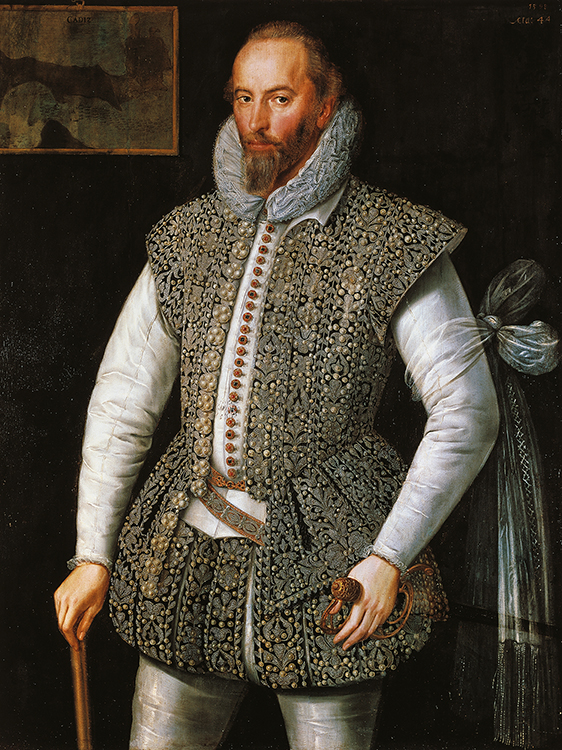The End of Walter Raleigh
Monday, October 29th, 2018October 29, 2018
On Oct. 29, 1618, 400 years ago today, Sir Walter Raleigh, one of the most colorful figures in English history, died in London at the age of around 66. Raleigh was a soldier, explorer, writer, and businessman. Daring and sometimes reckless, Raleigh spent much of his life working for the British Crown. He ran afoul of King James I, however, who jailed Raleigh and eventually executed him at the Palace of Westminster.

English adventurer Sir Walter Raleigh died 400 years ago today on Oct. 29, 1618. Credit: Sir Walter Raleigh (1598), oil on canvas attributed to William Segar; National Gallery of Ireland (© DeAgostini/Getty Images)
Raleigh was born (most likely in 1552) in Devonshire and was educated at Oxford University. He left school before graduating to join a band of gentlemen volunteers who were helping persecuted Huguenots in France. In 1578, he returned to England and joined his half brother, Sir Humphrey Gilbert, on a voyage of discovery and piracy.
In the early 1580′s, Raleigh frequented the court of Queen Elizabeth in London. Ever the enterprising gentleman, Raleigh is said to have removed his coat and laid it over a mud puddle for the queen to walk upon. The story’s truth is doubtful, but he did charm the queen, who granted him a large estate, gave him the right to colonize in America, and made him a knight. In return, Raleigh was a driving factor in naming a large swath of American territory Virginia in honor of Elizabeth, who was known as “The Virgin Queen.”
In 1585, an expedition sent by Raleigh established the first English colony in North America on Roanoke Island off the coast of modern day North Carolina. Sickness and fear caused the colony to fail, however. In 1587, Raleigh tried again at Roanoke, sending a group of 117 colonists there. John White, the Roanoke governor, went back to England for supplies. He was delayed by war with Spain, and when he returned to Roanoke in 1590, the settlers had mysteriously disappeared. (Raleigh himself never visited North America.) The Fort Raleigh National Historic Site commemorates those first English efforts to colonize America.
Raleigh also took part in the victory over the Spanish Armada in 1588. He led other expeditions against Spanish possessions and returned with much booty. During the 1590′s, his power reached its height, and he had much influence and many enemies. Raleigh, who was also a poet, helped Edmund Spenser publish the epic poem The Faerie Queene.
Raleigh’s fate turned when he married an attendant of Queen Elizabeth without royal permission. Expelled from the court, he searched for ways to recover his position and income. Intrigued by tales of El Dorado, a legendary city of gold in South America, he led a costly but fruitless expedition to Guiana.
Elizabeth died in 1603, and the new king, James I, distrusted and feared Raleigh. He charged Raleigh with treason and imprisoned him in the Tower of London. There Raleigh lived comfortably for 12 years with his family and servants, and wrote his History of the World. He was released in 1616 to again lead an expedition in search of gold in South America. The king ordered him not to invade Spanish territory during the mission, but Raleigh’s men attacked the Spaniards. Raleigh’s son Wat was killed in the attack, and Raleigh was forced to abandon the project.
Upon his return to England, Raleigh was sentenced to death for disobeying orders. He met his fate bravely, joked with the executioner, and even gave the signal for the ax to fall.


